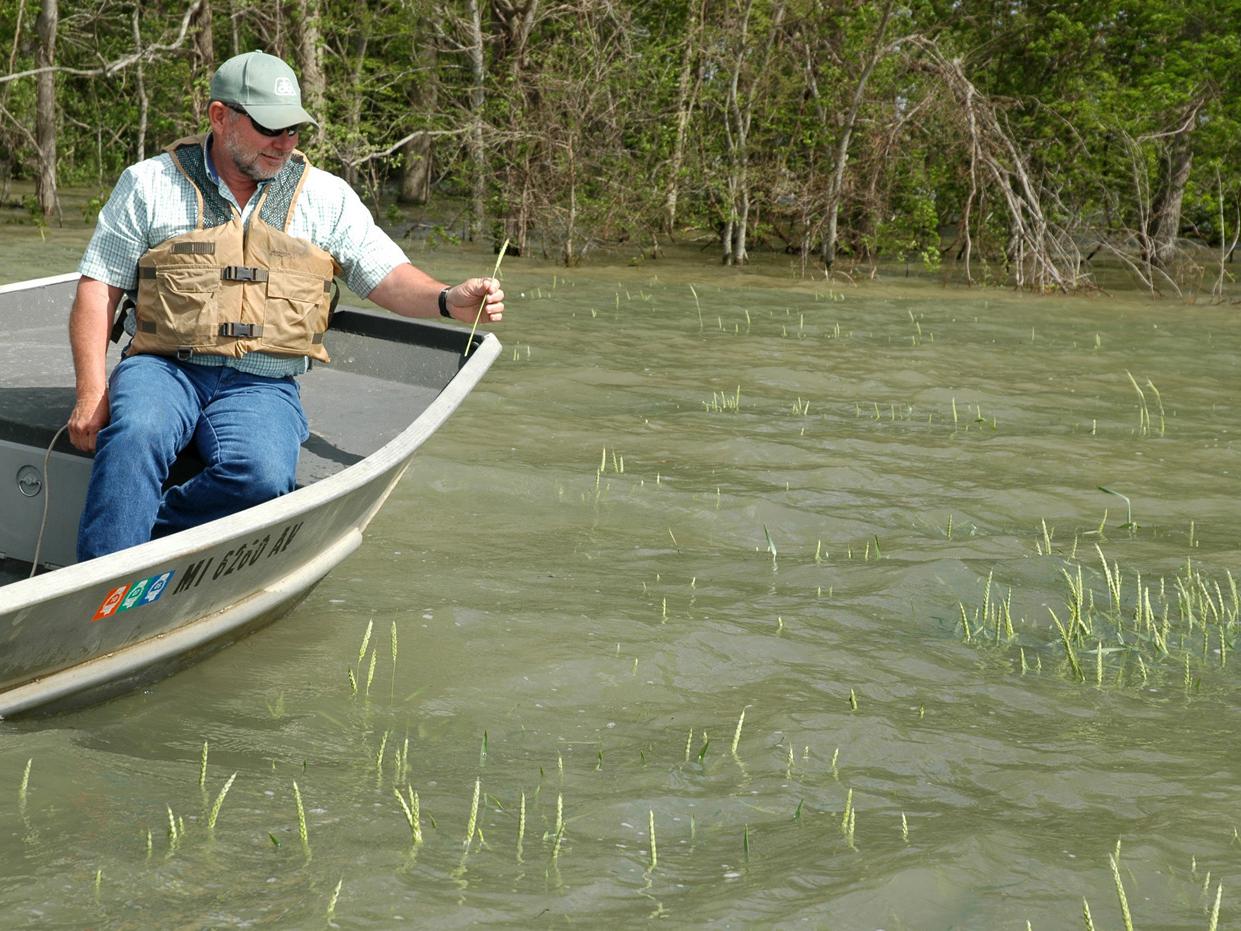Information Possibly Outdated
The information presented on this page was originally released on April 11, 2008. It may not be outdated, but please search our site for more current information. If you plan to quote or reference this information in a publication, please check with the Extension specialist or author before proceeding.
Flood waters rob wheat farmers
VICKSBURG -- Gambling on the river takes on a different meaning every spring for a handful of farmers.
Warren County Extension director John Coccaro said hundreds of acres, some of the county's best cropland, are 10-12 feet under water because of heavy rains well north of Mississippi. Most of the fields were planted in winter wheat last fall when the state was in a seemingly endless drought. Still, the fields have a history of flooding, which makes them too risky for insurance coverage.
Coccaro fields questions every day about cropland flooded by backwater from the Mississippi and Yazoo rivers.
“From a statewide perspective, the impact on the wheat crop will be a small percentage, but to the individual farmers involved, it's as much as a 100 percent loss,” Coccaro said. “And there are no easy answers for how the farmers will cope with their losses.”
On April 10, forecasters said the Mississippi River would crest in Vicksburg at 50.5 feet, or more than 7.5 feet above flood stage, on April 18. The crest date gets later and the water level rises as more rains occur upstream.
“Land that floods is usually the most productive because of the accumulation of nutrients in the soil,” Coccaro said. “This year, we have more at-risk fields planted because of the profit potential for wheat last fall. With the droughts we've been having, it did not seem to be a big gamble.”
Mississippi growers planted a record 400,000 acres of wheat, up 30,000 acres from the previous year. Growers produced an average of 56 bushels per acre in 2007, just short of the record average of 59 bushels set the previous year.
Grower Doug Jeter needs a boat to see his wheat fields near the Yazoo River. He was anticipating a 70-plus-bushel-per-acre yield when he fertilized the crop on Feb. 20. By the time he got the bill, his fields were under water.
“It's hard enough farming without a flood. I planted wheat on my highest ground, and it still went under. It's hard to find any land available that is not likely to flood,” Jeter said.
Compounding Jeter's situation is the fact that he sold most of his 2008 crop last fall to lock in on the strong prices at the time, and he's not alone. For example, if a farmer guaranteed an elevator 5,000 bushels at $7 per bushel, he must now go out and find 5,000 bushels he can buy to deliver in its place. With prices currently near $10, that farmer stands to lose $3 a bushel for a total loss of $15,000, not counting input costs, such as seed, fertilizer and fuel.
Coccaro said growers' planting intentions this spring will depend on more than the calendar as the flood waters slowly recede.
“The corn planting window is already closing, the profit potential for cotton is not looking good, and there is a significant shortage of soybean seed,” he said. “Milo, or grain sorghum, may be the most likely alternative.”
Grower Brad Bradway has seen 14 spring floods in the 30 years he has been farming. He described the 2008 flood crisis as “the perfect storm,” hitting the same year as the soybean seed shortage.
“It's harder to survive one bad year than it used to be,” said Bradway, as he expects to lose $25,000 on his 100 acres of wheat. The economic chain reaction could trickle down into the community's and state's financial pictures, he said.
“When farmers make money, it comes to town. When they don't, towns feel it,” Bradway said.
Wayland Hill, hydrolic technician with the U.S. Army Corps of Engineers in Vicksburg, said about 240,000 acres of cropland was under water on April 9. He estimated about another 100,000 acres would go under by the crest date.




